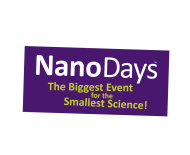DESCRIPTION
"Exploring Products - Computer Hard Drives" is a hands on activity in which visitors use floating ring magnets to store data. They learn that computer hard drives are one of the most common applications of nanotechnology.
DESCRIPTION
"Exploring Products - Computer Hard Drives" is a hands on activity in which visitors use floating ring magnets to store data. They learn that computer hard drives are one of the most common applications of nanotechnology.
TRAINING VIDEOS
OBJECTIVES
BIG IDEA
Computer hard drives are one of the most common applications of nanotechnology.
LEARNING GOALS
Computer hard drives are one of the most common applications of nanotechnology.
Nano-sized magnetic regions allow hard drives to hold a lot of information in a small space.
NANO CONTENT MAP
Nanoscience, nanotechnology, and nanoengineering lead to new knowledge and innovations that weren't possible before.
DOWNLOAD FILES
- Computer Hard Drives guide (DOCX)
- Computer Hard Drives guide (PDF)
- Sign (PDF)
- Binary Code reference sheet (DOCX)
- Binary Code reference sheet (PDF)
- My Name in Binary Code worksheet (DOCX)
- My Name in Binary Code worksheet (PDF)
- Data Storage reference sheet (DOCX)
- Data Storage reference sheet (PDF)
- Computer Hard Drives guide (Spanish) (DOCX)
- Computer Hard Drives guide (Spanish)
- Sign - Spanish (PDF)
- Binary Code reference sheet - Spanish (DOCX)
- Binary Code reference sheet - Spanish (PDF)
- My Name in Binary Code worksheet - Spanish (DOCX)
- My Name in Binary Code worksheet - Spanish (PDF)
- Data Storage reference sheet - Spanish (DOCX)
- Data Storage reference sheet - Spanish (PDF)
Credits
Sciencenter
Developed for the NISE Network with funding from the National Science Foundation under Award Numbers 0532536 and 0940143. Any opinions, findings, and conclusions or recommendations expressed in this product are those of the authors and do not necessarily reflect the views of the Foundation.
Creative Commons Attribution Non-Commercial Share Alike 3.0 United States (CC BY-NC-SA 3.0 US).
View more details

NISE Network products are developed through an iterative collaborative process that includes scientific review, peer review, and visitor evaluation in accordance with an inclusive audiences approach. Products are designed to be easily edited and adapted for different audiences under a Creative Commons Attribution Non-Commercial Share Alike license. To learn more, visit our Development Process page.




